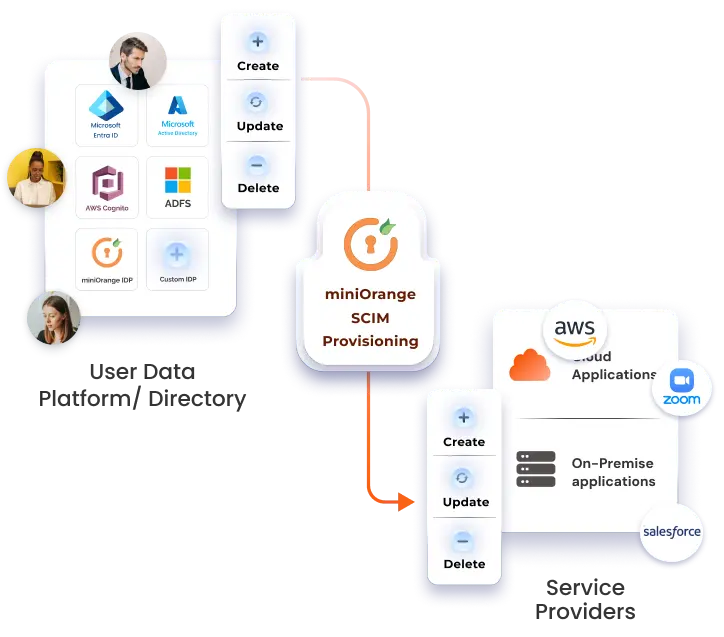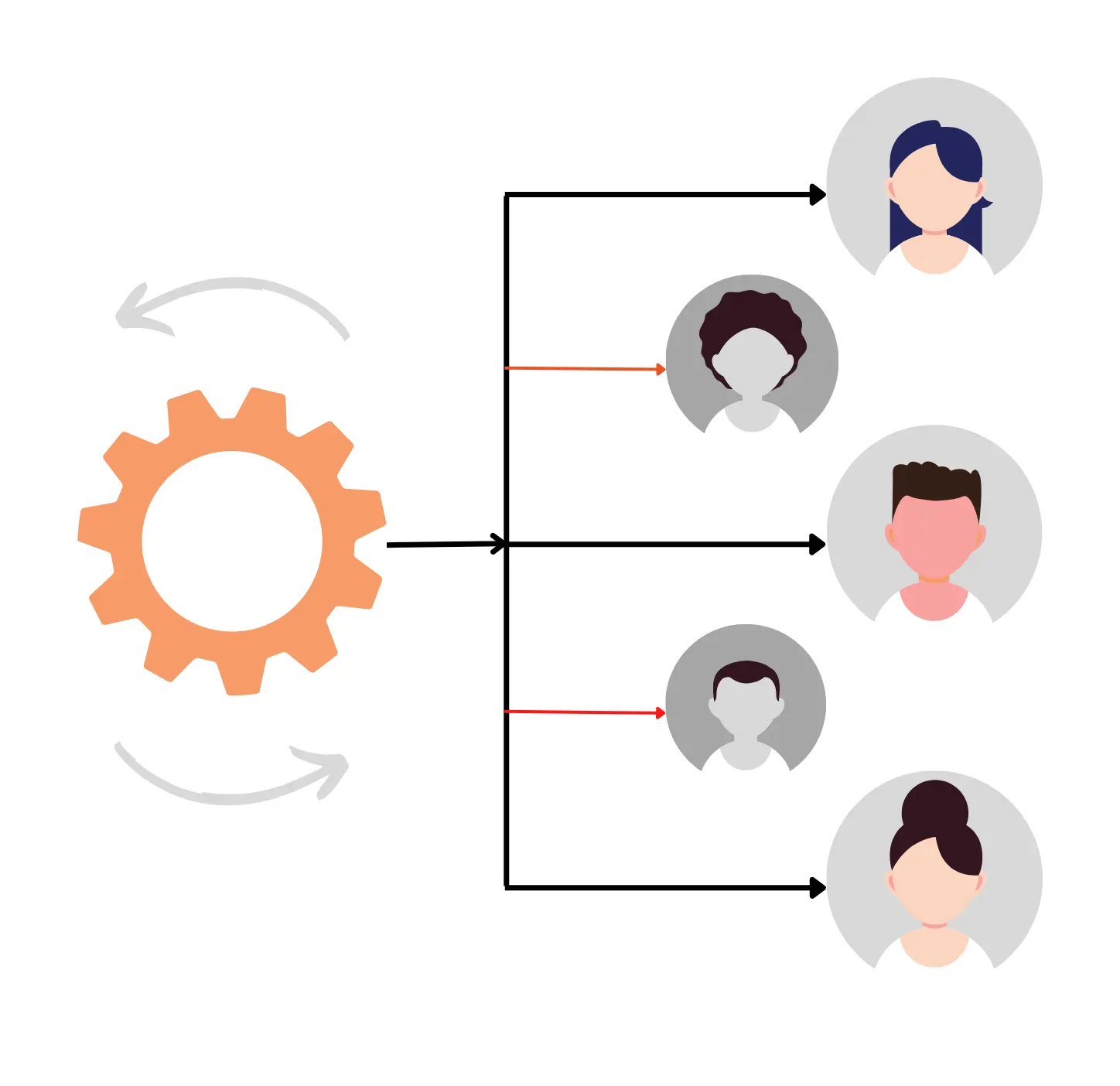Need Help? We are right here!
Search Results:
×System for Cross-domain Identification Management (SCIM) is an open standard that helps in automating the user identity lifecycle management process. SCIM Provisioning helps in establishing communication between cloud-based applications, by formalizing the integration between the Identity Provider (user data platform/directory) and the Service Provider (i.e. SaaS apps you need to access).
Once SCIM Provisioning is integrated, 'Create,' 'Update,' and 'Delete' operations conducted in the IDP (where user data is kept) are automatically synchronized with the SPs (SaaS apps like Salesforce, AWS, Zoom, and others). This improves the security of user data while also simplifying the user lifecycle management process.







REST API for SCIM Communication
SCIM utilizes a REST API with standard HTTP methods (GET, POST, DELETE) to facilitate communication between systems, allowing for efficient data exchange.
Setting Up SCIM Endpoints
Setting up SCIM endpoints is essential for managing identity resources, such as users and groups, enabling systems to interact and update these resources effectively.
Encoding User Attributes in SCIM
User identity attributes, such as usernames and addresses, are encoded into SCIM objects that adhere to a standardized schema, ensuring consistency and compatibility across different systems.
Seamless Identity Communication Through Firewalls.
SCIM enables smooth communication between Identity Providers and Service Providers, even when organizational firewalls are in place, ensuring uninterrupted data flow.
Centralized Identity Management with SCIM
Centralized Identity Management with SCIM ensures data consistency between the identity provider and service providers, enhancing accuracy and integrity across systems.
Automated User Provisioning and Deprovisioning
Streamlines onboarding and offboarding processes by automating provisioning and deprovisioning of users.

miniOrange SCIM Provisioning gateway integrates with a wide range of SaaS and Cloud-based applications, directories and Identity Providers.
User provisioning is mostly used by organizations, especially IT to grant and regulate access to resources. In order to be effective, provisioning methods must ensure consistent and simple management of account creation and access to software and data. SCIM integration automates this process, providing seamless updates and consistency across various applications.
Group Provisioning is required when you wish to keep the same user hierarchy and access control in many apps at the same time. Between multiple programs, you may sync users with their correct group names. Integration using SCIM facilitates the synchronization of user group memberships and permissions across all platforms.
Cloud applications are automatically provisioned with user identities and roles that users require. The process of automated provisioning allows for the creation of new user identities as well as the maintenance and removal of existing ones when their statuses or roles change. SCIM enhances this by managing user provisioning and updates efficiently, ensuring accurate role and status changes across all applications.
*Please contact us to get volume discounts for higher user tiers.
Speed up the onboarding process as quickly as possible, when a new employee is onboarded. IT admins can automatically sync access to various applications based on their role in the HR system.
Easily sync, and automatically update information from the HR system in real-time and apply them across all IT systems. Effortlessly manage any scenarios where authorization levels can change frequently.
Automation ensures freeing IT & HR admins by reducing the challenges and delays associated with manually managing profiles and account rights, mitigating security breaches by reducing the impact of human mistakes and improving operational efficiency.

Synchronize users effortlessly and control their access to devices, applications, networks, etc. with a personalized experience for both customers and organizations.

HR-driven IT Provisioning allows seamless integration between HR and IT systems, including central directory and other critical business applications.

User Lifecycle Management is a solution that allows organizations to implement one customer, one identity approach for easy access and managing all the employees.
User accounts are growing fast as businesses expand and innovate. Requests to create and delete users, adjust permissions, and add new types of accounts all take up valuable time of the IT department. Through the automation of the user identity lifecycle management process, SCIM Provisioning integration improves user data security and streamlines the user experience. User IDs can be created using SCIM either directly in miniOrange or by importing them from other systems like Active Directory or HR software. Because it is a standard, user data is saved consistently and may be shared simultaneously across multiple apps.
The Provisioning app demands SCIM or API based integrations to enable SCIM Provisioning. miniOrange has provision to provide SCIM-based and API based integration to thousands of industry-leading applications to communicate and sync your data quickly and securely. You can try miniOrange SCIM integration free for 30 days to see how it can help you in streamlining your organization’s user identity management.

Identity, Access, and Beyond